What is a photocatalyst?
What is a photocatalyst?
Recent media reports have called Photocatalysis the "Most Significant Japanese Invention of the 21st Century".
But what exactly is the process of Photocatalysis and the Photocatalysts that make it happen?
A Photocatalyst is a coating agent containing titanium dioxide (note 2) as its active component. An oxidation-reduction chemical reaction occurs when light comes into contact with the Photocatalyst. When applied to surfaces it functions to purify air so as to prevent the contamination of the surface. Moreover, this technology functions as a revolutionary Catalyst for protecting the environment. (note 1)
For example, using a photocatalyst to coat the exterior wall of a building allows for the decomposition of exhaust gas(NOx).
It also prevents dirt and grime build up created by rainwater run-off.
By coating interior walls with such an agent, hazardous substances (VOC) and various germs (influenza, mold, E.coli, Staphylococcus aureus, MRSA and others) that cause "Sick Building Syndrome" are broken down and made harmless.(see graphic 1)
In actuality, very important photocatalysts are found in our immediate environment. The process of Photosynthesis used by plants is also an example of a photocatalytic reaction.(see graphic 2)
Note 1: Titanium dioxide is a safe and commonly used substance found in chewing gum, cosmetics, sunscreen and other consumer goods.
Note 2: A Catalyst is a substance that doesn't react on its own, but serves as an aid in the reaction of other substances.
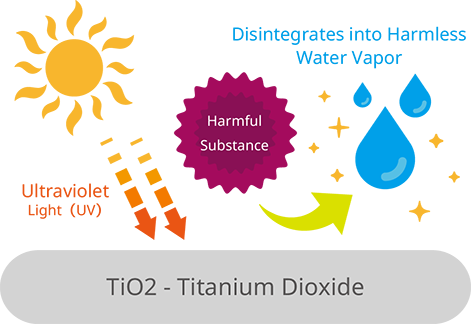
Graphic 1: Photocatalyst in Work
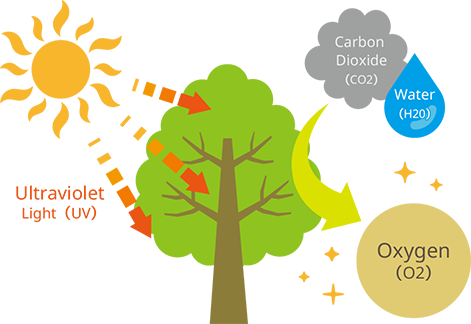
Graphic 2: Photosynthesis of Plants as an Example of a Photocatalytic Reaction
The Two Major Functions of Photocatalyst
Degradation
Titanium dioxide is a semiconductor that, when coming in contact with light, produces electrons and electron holes. It then reacts with water and oxygen to create hydroxl radicals (•OH) and reactive oxygen allowing for the degradation and decomposition of harmful substances. This leads to a self-cleaning effect.
-
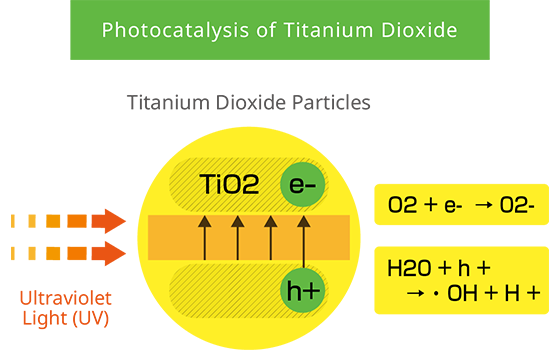
Principle of Photocatalysis of Titanium Dioxide (TiO2)
-
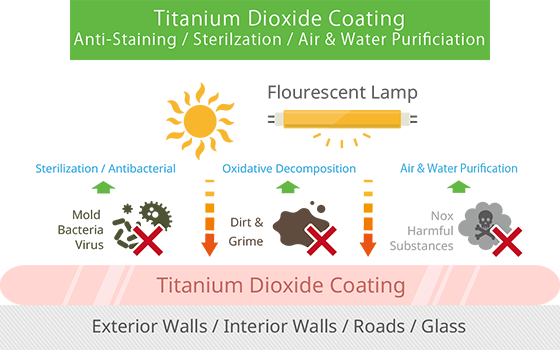
Envionmental Purification Process Resulting from Light Interacting with Titanium Dioxide
Super Hydrophilicity
When light and water come in contact with a titanium dioxide coated surface, the surface becomes covered with hydrophiles. This super-hydrophilic process loosens dirt and grime found on the surface and water to rinse the surface clean of oil, dirt, grime, dust and other such contaminants. This phenomenon is seen when rain or other water comes in contact with the surface, resulting in self-cleaning.
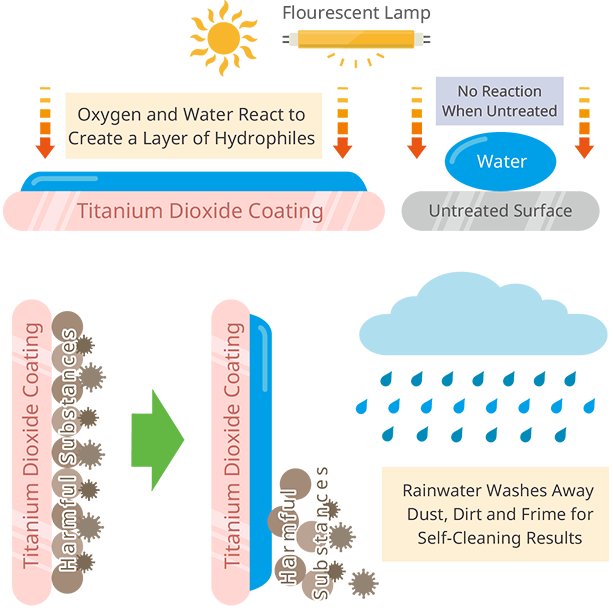
Principle of Photocatalysis of Titanium Dioxide (TiO2)
-
Browse Catalog
Catalogs for our products can be found here. Please have a look.
Catalog Download Page -
Customer Support
For more information about our products
Contact Page
please contact us here.
Contact us by telephone or by using our contact form or brochure request form.
We are looking forward to hearing from you today.
